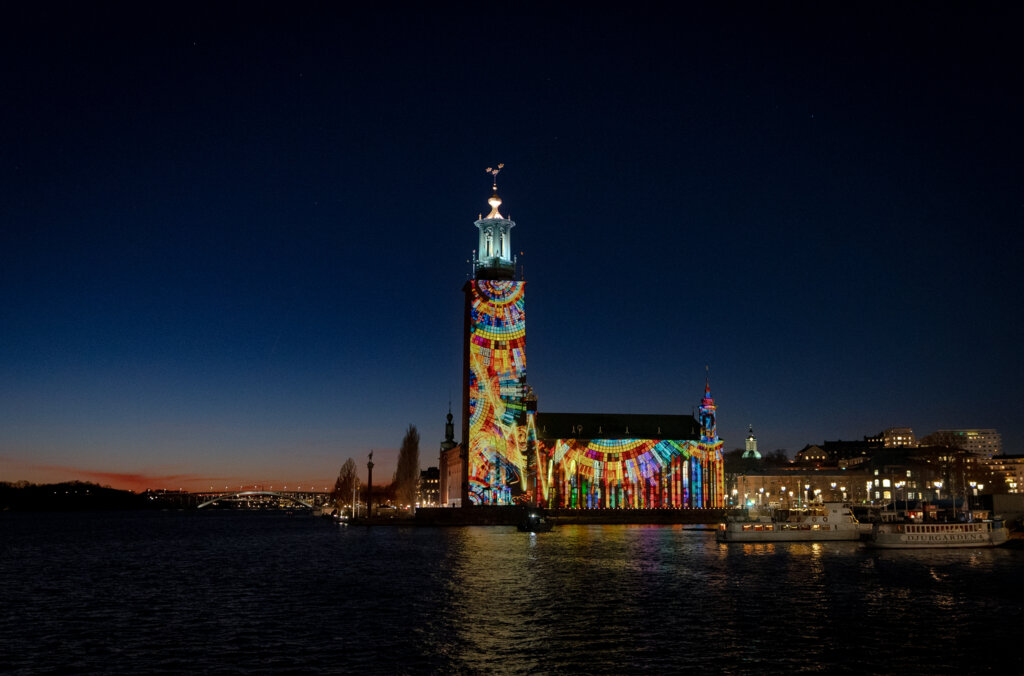![[re|in]verse](https://nobelprizemuseum.se/images//150214-landscape-x-large.jpg)
In 1932, Werner Heisenberg was awarded the Nobel Prize in Physics for modeling quantum mechanics, then an emerging field of research. He achieved his discoveries via matrices, which are powerful but complex mathematical tools. Living in a pre-computer world, Heisenberg would calculate and manipulate matrices by hand, with pen and paper.
In our current age, quantum mechanics researchers still work with these matrices and continue Heisenberg’s work, but with computers. It may appear simpler and clearer, they are just pressing buttons – but thousands of operations are happening very quickly behind each push of a key. Mathematical matrix manipulation is a common tool used in the development of scientific data and in the current advances in AI, computer graphics and wireless communication.
In this installation, light beams animate the matrix manipulation process, reflecting it across the water and around the pillars under Centralbron. A delicate sound work accompanies the animation, following the ebb and flow of operations in the deepest software currents of an actual matrix.
NOBEL WEEK LIGHTS
6–14 December 2025
Discover all artworks in Nobel Week Lights 2025.
re|thread and Jaime Reyes
re|thread is a collective of software researchers, artists, and designers, in Stockholm. They work at the intersection between software technology, art, interaction design, sonification, and visualization, and focus on the use of software as the material and medium for artistic creation.
Jaime Reyes is an artist based in Stockholm whose work takes on a surreal, multicultural, and nonlinear nature through his use of multiple technologies.

Nobel Week Lights
Art lighting up Stockholm
Read about Nobel Week Lights, a free light festival taking place in Stockholm during the darkest time of the year.